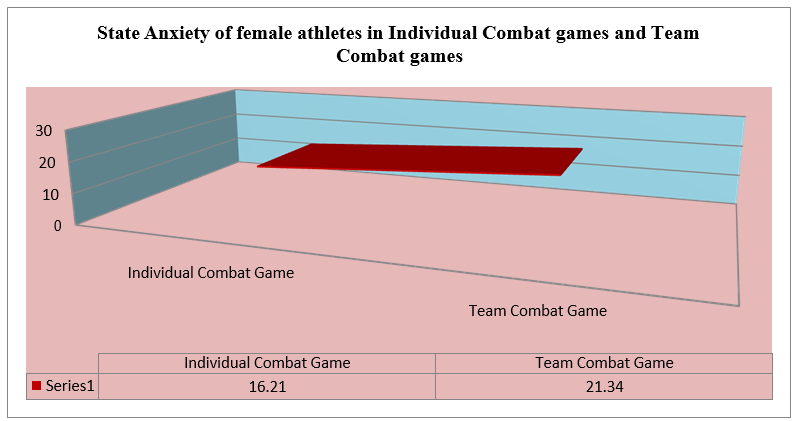Prevalence Of State Anxiety Of Female Athletes In Individual Combat And Team Combat Game
S1*†, Singh A2†
DOI:https://doi.org/10.55968/ijems.v14i01.401
1*† Sonia, Phd Scholar, Department of Physical Education, Punjabi University, Patiala, Punjab, India.
2† Amarjeet Singh, Principal, Sardar Rajinder Singh Chahal College of Physical Education, Kalyan Patiala, Punjab, India.
The purpose of the study was to prevalence the state anxiety of female athletes in individual combat and team combat game. Fifty (N=50) Female athletes (N1=25) Individual Combat game athletes and (N2=25) Team Combat game athletes). The age of the subjects was ranged between 17-21 years. The subjects were selected by random sampling technique from the provinces of Punjab and Haryana. Through both the critical and allied literature pertaining to the problem under consideration the variable selected for the study was Psychological Variable State Anxiety. To assess the Psychological Variable State Anxiety, questionnaire developed by PSY- COM Services (1991) was used. The entire analysis has been carried out by using statistical software (SPSS 17 version) to address the selected research issue which had been deliberated by means of using Independent "t-Statistics" at level of Significance 0.05. Results indicates that a significant difference exists in the State Anxiety of female athletes in Individual Combat games and Team Combat games, since the calculated ‘t’ value 4.53 which was found to be higher than tabulated ‘t’ value 2.05. So, the means of two Games (Individual Combat games and Team Combat games) were found to be rejected at 0.05 level of significance.
Keywords: State Anxiety, Female athletes, Individual Combat games and Team Combat games
| Corresponding Author | How to Cite this Article | To Browse |
|---|---|---|
| , Phd Scholar, Department of Physical Education, Punjabi University, Patiala, Punjab, India. Email: |
S, Singh A. Prevalence Of State Anxiety Of Female Athletes In Individual Combat And Team Combat Game. ijems. 2025;14(01):48-51. Available From https://ijems.net/index.php/ijem/article/view/401/ |


 ©
© 